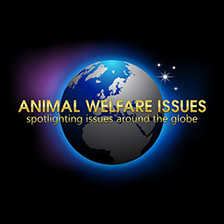
Join us March 12-16 in our annual celebration of National Wildlife Week!
The rich history of National Wildlife Week dates all the way back to its first celebration in 1938. The longest-running education program, National Wildlife Week connects budding conservationists of all ages to the awesome wonders of wildlife. Now more than ever, these connections serve as a vital component to recovering our nation’s most vulnerable wildlife.
For people across the nation, this week is a chance to learn more about the incredible animals native to North America, their habitats, and how we can help them thrive. This year we’re highlighting some of those species as we hit the road to the Final Fur and providing educational resources for students to take action in order to save our treasured species.
Deepening Our Students’ Connections to Wildlife
10 Ways to Take Action
Today’s students will play a vital role in saving wildlife for future generations. These resources, assembled by the National Wildlife Federation’s Eco-Schools USA program, provide ways for students to connect with wildlife in their backyard, schoolyard, and beyond. Here are 10 ways to take action:
- Get to know this year’s Final Fur competitors. Download the Final Fur trading cards for stats on each player. Then, between March 12-15, encourage students to guess the winners by filling out their own Final Fur bracket.
- Browse the Wildlife Guide. Learn more about some of the featured species for 2018, such as the Hawaiian monk seal or the Florida panther.
- Research threatened and endangered species in your state. Start your search online with the U.S. Fish and Wildlife Service, then develop an action plan that will support the species’ habitat needs.
- Conduct an audit. Investigate and assess how your school engages with biodiversity or Schoolyard Habitats.
- Develop an action plan to build wildlife habitat at school. Once habitats are built, apply for a Schoolyard Habitat certification designation.
- Conduct species-specific citizen science. Support professional researchers by getting involved with a citizen science program.
- Volunteer to remove invasive species from local parks. Invasive species can decimate wildlife habitat.
- Participate in or host a watershed cleanup event. Many local plant and animal species rely on healthy waterways to meet their habitat needs.
- Partner with a local college or university to assist in research about a particular species.
- Adopt an animal. Visit the National Wildlife Federation’s adoption center to symbolically adopt a wildlife species.

Leave a Reply